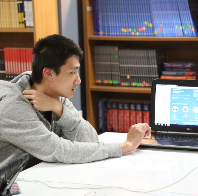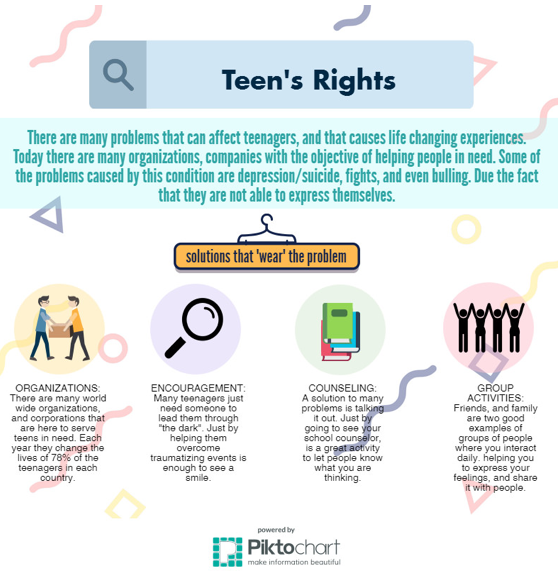
After 11 years of teaching all the high school level English as a Second Language (ESL) courses I thought were available in the state of Texas, I was suddenly assigned the task of teaching “Practical Writing ESL”—the objectives for which, I was told, were straightforward and easy to follow. Once I looked at them myself, I came to realize that this was probably instituted as a remedial course to help get English Language Learners (ELLs) to pass the writing portion of our state assessment. The expectation, it would seem, would be to dole out practice writing prompts all year to better “prepare” the students taking the course.
The problem is, I don’t do that.
Instead, I decided I would implement my first true attempt at PBL and provide my students writing tasks that were related, important, and most of all real. Due to various experiences I’ve had working outside the classroom, I’ve come to understand that test-prep is not life-prep and when we focus only on getting the test score we want, we often leave students crippled in their ability to be truly effective writers. I wanted to make sure that my ELLs left “Practical Writing” with genuine literacy skills that could authentically be put into, well, practice.
Writing on Social Justice Issues for a Public Audience
The course was designed as a year-long study of a social justice issue chosen by each student. Writing would then be crafted and housed in a website with the unifying purpose to raise awareness for their cause, thus providing an authentic platform and audience (the world). This was done in keeping with the BIE “Gold Standard” Project Design Elements to ensure that this became a valid experience that fostered “key success skills” that stayed with the learner long after their time in my class. To accomplish this, students would engage in writing tasks ranging from research-based expository text to crafting infographics that visually represented the problems they are focusing on. Above all, I wanted to make sure that all assignments in this project both improved my students’ writing skills and contributed to the larger goal of being globally minded citizens working to do their part in a connected world.
To illustrate, I want to take a look at the process used to lead my students through their most recent unit on infographics. After having written more formal research on their social justice issues, I wanted my students to see that there are more modern and dynamic ways to represent data than just adding a chart or graph to a website. We spent a good week just learning what an infographic is and how to create one well (check out this resource or this one from Canva on composition and design). Starting here, you can see the process I used to help my ELLs work through this assignment as well as the other writing tasks we have accomplished so far.
Establish author’s purpose
Provide time for students to explore the reason why someone would make an infographic and how to do it well. This was accomplished by taking advantage of online publications to help students see that they can learn from the world of information readily available to them.
Study mentors
This is an invaluable practice that I learned from Allison Marchetti and Rebeka O’Dell in their book Writing with Mentors. Instead of providing students with a graphic organizer or pre-made template for writing or, in this case, project completion, I turn to the professionals. Students see what real infographics produced by real business people look like and explore what they are doing right that can be emulated.
Develop a research question
Once the idea of an infographic is concrete for the learners, it was time to develop their own purpose for creating one. The challenge at this point was to isolate the specific concepts from their social justice issues that could be effectively represented in this format and turn them into something cohesive that could be learned from.
Plan
With a purpose to guide them and mentors to reference, I was able to turn students loose to plan their infographics. As they planned, they had to justify their decisions for composition, data, color pallette and images. This demonstrated that they were not just making something “cute,” but were actually employing the concepts they learned towards creating quality, useful pieces.
Reflect
Throughout the process (and in all writing tasks), my students kept a blog to reflect upon their work and explain the thought process behind it. I have found this to be one of the most crucial components of the course as this is the place where I can see the learning really materialize. With these posts, my ELLs also get practice seeing the difference between using casual and formal registers and when it’s appropriate to use either. They also have the opportunity to practice being good digital citizens as they comment on each other’s posts to offer respectful criticism and honest affirmation of their work.
Publish
After all this, my students were finally able to create infographics using Piktochart and publish them to their websites. This stage was probably the least rigorous as the majority of their effort was applied to the stages leading up to it. This ensured that the end result was something of quality that could legitimately be used to support the larger purpose of spreading awareness for their cause. I am enormously proud of their work.

When working through projects such as this, do I worry that because I didn’t spend the year suffering through test-aligned prompts that my students will not pass the state assessment? That having my students create websites and infographics is somehow a waste of time when considering all that they are accountable for? Good writers are good writers. If you have real skills in the art of persuasion and providing valid and credible information, they will show when you have to demonstrate them on a less-than rigorous state assessment.
Because of the fact that my students are ELLs, they have been expected to achieve nothing less than excellence and were respectfully provided a meaningful platform to do it in. Their infographics are a part to the whole portfolio of great writing they have accomplished throughout this year, made possible by the fact that they were writing about real things. I want my students to know that their writing has power and that with their skills, they are forces to be reckoned with.
As a first year PBL-er, I can say that this has far exceeded my greatest expectations for this course and has set my career on a new and exciting path that I’m sure my current and future students will benefit from.
Follow Bret on Twitter @BretMistergesl

